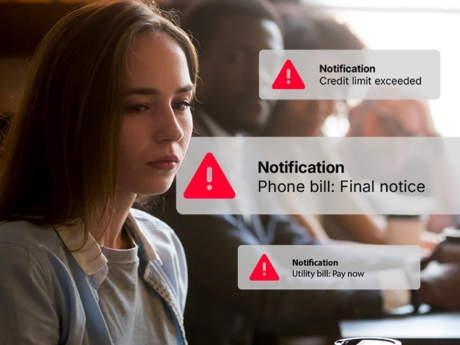What is a student line of credit?
CPA, CIRP, Licensed Insolvency Trustee

CPA, CIRP, Licensed Insolvency Trustee
Government student loans aren’t an option for everyone, or in some cases, its funding won’t cover all your education costs. While some students can lean on family or savings for financial support, that isn’t an option for most.
To fill any gaps, many students--especially those pursuing expensive professional degrees like medical school, veterinary college, law school, or dental school--turn to a student line of credit: A line of credit specifically for students funded by lenders like banks and credit unions. While these lines of credit give students the financial support required to complete their studies, they have unique risks compared to government student loans.
What’s the difference between a student loan and a student line of credit?
It can be confusing to distinguish a student loan vs a student line of credit, as they are sometimes mistakenly used interchangeably. To help, we've broken down the key differences between student loans and student lines of credit below:
Student loans | Student lines of credit | |
Lender | In Canada, student loans are usually provided by the federal or provincial government with a few private lending options. | A student line of credit can only be received through a private lender like a bank or credit union. |
Co-signer | Most government student loans don’t require a co-signer; however, the size of your loan and your eligibility is determined based on your household income. Private lenders can set their own co-signing requirements for student loans. | Student lines of credit designed for medical, dental or veterinarian students often don’t require a co-signer. For undergraduate student lines of credit, or other fields of study, a co-signer will most likely be required. |
Distribution of funds | Student loans are usually deposited in the borrowers account all at once. | A student line of credit has a maximum borrowing amount that the borrower can draw from at any time. |
Borrowing period | Student loans are usually applied for on a term or yearly basis. | The borrowing limit for a student line of credit is usually established for an entire course of study spanning several years. |
Interest | Federal student loans don’t gain interest while you’re in school and remain at 0% interest after graduation. Provincial and private student loan interest rates vary by province and lender. | Private lenders are free to set their own interest rates that may fluctuate over time. Interest will begin collecting on a line of credit as soon as you start borrowing, however, like a typical line of credit, you’ll only pay interest on what you’ve used, not the maximum borrowing amount. |
Repayment | You’re not required to repay student loans until six months after leaving your program. You can also access repayment assistance programs or student loan forgiveness. | Like any line of credit, you’ll be required to pay interest on any funds you’ve withdrawn -- even while in school. At minimum, you’ll only have to make your monthly interest payment, giving you flexibility to pay back the full amount as it becomes affordable. |
Can it be included in a consumer proposal or bankruptcy filing? | You must be out of school for at least seven years before your student loans (and apprenticeship loans) can be included in an insolvency filing. | A student line of credit can be included in an insolvency filing as soon as you stop withdrawing from it. |
Should I get a student line of credit?
Student lines of credit can make post-secondary education possible for Canadians who cannot access government student loans. They also can fill the gaps between government funding and the added expenses of advanced degrees like medical school, dentistry, law, vet school, pharmacology, and other graduate programs. However, student funding options like scholarships, grants, bursaries, and government student loans should always be your first stop.
Student lines of credit often have higher funding limits and can be used to cover education related expenses like tuition and textbooks. They can also help with living costs like housing, a vehicle, or day-to-day expenses. But lines of credit also come with higher interest rates, little to no repayment assistance options, and the risk that you'll use up the balance of your credit line limit before the end of your advanced degree.
If you do decide to borrow a student line of credit, strong budgeting skills are a necessity. These lines of credit are generally approved for the length of your program and once you hit your limit, you’re out of money. By keeping on top of your spending, you can prepare for unexpected expenses like a car repair or an emergency trip home. If you stick to your budget, the worst-case scenario is you end up borrowing less than your limit, collecting less interest, and repaying less in the long run. Remember, just because you were approved for a certain amount, doesn’t mean you need to use the entirety of it.
What if I can’t repay my student line of credit?
There are many reasons why you might not be able to pay back your line of credit: maybe your initial salary was less than you expected, you were unable to finish your advanced degree, or other monthly payments have monopolized your income.
If spending habits and lifestyle changes aren’t enough to free up space in your budget, you could look at filing a consumer proposal or bankruptcy to help with your debt. One major difference between student loans and student lines of credit is how they’re handled in a consumer proposal or bankruptcy.
Government student loans are a special category of
debt and can only be included in a bankruptcy or proposal if you’ve been out of school for at least seven years. A student line of credit on the other hand, can be included in an insolvency filing as soon as you stop drawing from it.
If you’re struggling to repay a student line of credit or other debt, it’s a good idea to talk to a Licensed Insolvency Trustee. We're federally regulated debt professionals obligated to help you find the best solution for your debt. Book your free consultation today on our website.
Take the first step to debt freedom
Speak to one of our debt solutions professionals during a free, no-obligation consultation.
Related articles
Loading







